#websiteanalytics
Explore tagged Tumblr posts
Text
What is a Good Bounce Rate for an e-commerce Website?
Determining a "good" bounce rate for an e-commerce website isn't a straightforward answer, as it depends on several factors:
Industry: Different industries have varying norms. For example, fashion e-commerce might see higher bounce rates (around 45-55%) due to browsing behavior, while travel websites with specific goals could have lower rates (30-40%).
Page type: Landing pages designed for specific products or promotions might have lower bounce rates than informational blog posts.
Traffic source: Visitors coming from targeted ads or organic searches are more likely to engage than those from random referrals.
Overall user experience: A well-designed website with clear navigation, fast loading speeds, and relevant product information will naturally keep visitors engaged and reduce bounces.
However, here are some general benchmarks to consider:
Average e-commerce bounce rate: 43%
Good benchmark range: 20% - 45%
Below 20%: This might indicate inaccurate tracking or very specific traffic sources.
Above 60%: Likely signifies issues with the website or user experience that need addressing.
Bringing down the bounce rate is not rocket science and you can achieve that for your website with a few simple steps. While focusing solely on bounce rate may shed light on one aspect of website performance, other metrics like conversion rates, average session duration, and pages per session help to get a holistic view of user engagement.
Here are some tips for improving your e-commerce bounce rate:
Optimize website speed and performance.
Ensure clear and concise product information with high-quality images.
Simplify navigation and make it easy to find desired products.
Use strong calls to action to guide users towards conversions.
Run A/B tests to identify areas for improvement.
By understanding your specific industry, target audience, and website goals, you can set realistic bounce rate targets and focus on strategies that optimize the user experience and drive conversions.
#bouncerate#marketing#BounceRate#WebsiteAnalytics#UserEngagement#WebsitePerformance#ConversionOptimization#DigitalMarketing#SEO#WebDesign#UserExperience#MarketingMetrics#OnlineMarketing#ContentStrategy#WebsiteTraffic#DigitalStrategy#OptimizationTips
4 notes
·
View notes
Text
The Messy Truth About Our Artist Website Analytics Journey
Hey creative friends! We've been on quite the adventure trying to understand our website stats these past few months. You know that feeling when you log into Google Analytics and it looks like hieroglyphics? 😵 Yeah, us too.
After countless late nights and way too much coffee, we've finally started making sense of which metrics actually MATTER for artists (spoiler: they're not the same as for e-commerce sites selling socks).
We gathered everything we've learned into our latest guide, including this color-coded dashboard that's helping us track the 5 essential metrics we wish we'd known about from the start:

The biggest surprise? Finding out that Pinterest was sending us serious art enthusiasts while we were pouring all our energy into Instagram. Oops! And discovering that visitors spend WAY more time looking at our landscape series than our portraits (guess which one we're focusing on now?).
If you're struggling with making sense of your website performance or just want to understand which pieces in your portfolio are actually connecting with people, we'd love to have you join us!
What surprising insights have you discovered about your own art website? Drop us a note - we're all in this creative hustle together! 💙
Link to full guide:
#artistresources#creativelifehappylife#artbusiness#artistsoftumblr#digitalartist#arttips#studiolife#creativebusiness#artistproblems#artmarketing#websiteanalytics#creativecommunity#artistsonline#artsellingtips#socialmediaforartists#creativehustle#artentrepreneur
0 notes
Text
Does Google Analytics for Your Website Cost to Set It up?
Google Analytics is the most popular tool for tracking and analyzing website traffic. Decrypting it whether you are a small business owner, a blogger, a marketing professional or anyone — Google Analytics is a boon, as it gives you insightful information on how users are interacting with your website. However, there is a most common question that comes in mind is “Is there any cost for Google Analytics setup for a website?
So let’s explain the costs and how to set up Google Analytics and if there are other potential expenses you should keep in mind.
Google Analytics is Easily Accessible for Most Users. The good part is, Google Analytics is free for most users as small businesses, bloggers, personal websites, etc. There’s a free variant of Google Analytics that gives you the ability to see how much traffic your site is getting, how your audience behaves, how much you’re converting, and much more!
The latest version, Google Analytics 4 (GA4), is also entirely free, but it has advanced features compared to previous versions (including better event tracking, cross-platform integration, and machine learning-powered insights).
When Would You Have to Pay for Google Analytics?
Google Analytics has two versions: the base version, which is free, and Google Analytics 360, a paid version. However, the paid version of GA4 has a few extra features mainly designed for large enterprises or websites with very high traffic volumes, and this version is part of the Google Marketing Platform.
Google Analytics 360 Key Features:
Increased data limits: Google Analytics 360 allows you to process larger volumes of data, which can be crucial for high-traffic websites or e-commerce sites that have millions of visitors per month.
More, customizable options: 360 users gain advanced customization and support options.
This article is for users who are on aggregate data (360) and need premium support from Google.
This allows for advanced integrations and access: Google Analytics 360 is better linked to other Google products (such as BigQuery), and it enables higher levels of data sampling (which means it ensures better accuracy in reports).
The license for Google Analytics 360 is expensive — roughly $150,000 per year. Generally this is only available for big companies or sites with huge amounts of traffic.
Get started with Google Analytics Setup costs
Although the tool is free, there are other costs involved in implementing Google Analytics on your site:
Development Costs
However, if you are not familiar with the tool or don’t have experience working with tracking codes, then implementing Google Analytics can be a challenge.
Here are some examples of when you may incurdevelopment costs:
Adding the tracking code: You may need to hire a developer to insert the Google Analytics tracking code into the pages of your website if you are not familiar with how to install this code. Installation itself is usually a quick copy-and-paste into your site’s header or footer, but with complicated platforms or content���management systems (WordPress, anyone?), a developer may be able to assist with ensuring it’s installed successfully.
Even e-commerce setup: If you're an e-commerce and want to track transactions, product views and other metrics, enhanced e-commerce tracking with Google Analytics requires some additional setup. Depending on your platform, a developer might be required to configure this tracking.
Limited customization: Some aspects of Google Analytics, such as goals or events, may limit your ability to customize your reports to meet your specific needs. You need a specialist who can configure everything to align with what you want to achieve if you want custom reports or established goals.
Time and Learning Costs
Google Analytics is free to use, but it takes time to learn the tool. Web analytics involves knowing how to use it — this can take some time if you or your team aren’t familiar with it. You might decide to spend resources on classes to help you experience upskill.
There are a lot of free resources that include:
Google’s Analytics Academy: Free online courses covering everything from basic setup to advanced features.
Online Youtube tutorials: There are many free tutorials available online guiding you through setting up of Google Analytics features.
Or, you can have a consultant or agency come in to set up Google Analytics and train you on how to use it. Consultant fees range from $50-$200/hr depending on their expertise and complexity of your setup.
Should You Hire a Professional?
If you have a very simple website and want to monitor some basic stats (such as page views, bounce rates, and traffic sources), it is usually enough to just set up Google Analytics yourself. Excellent Google Docs documentation is available, and there are many free guides online to help you get started.
"But if your website is complex, you have an e-commerce store or you need specific custom tracking, such as event tracking, user behaviour tracking or enhanced e-commerce setup, you might want to hire a pro to help make sure everything’s set up properly.” This will help you not to miss anything but also avoid making mistakes during the configuration, which would reduce the quality of your reports.
Ongoing Maintenance Costs
After initial set-up, there will be little maintenance cost, unless you need advanced features or custom reports that require regular updating. However, if your website receives a major overhaul (such as a redesign or migration to a new platform), you might want to revisit the setup to ensure the tracking is properly functioning.
Conclusion: Is Google Analytics Paid or Free?
Simply put, the basic version of Google Analytics is free for most users, and there are no costs involved with the setup process itself. Both free and paid versions offer all the tools to track your website performance and optimize your marketing efforts.
However, the paid version -- Google Analytics 360 -- offers extra features and greater levels of support, making sense for large enterprises with huge websites and specific requirements. While signing up for Google Analytics is free, and initial setup won't cost anything yet, you may need to budget for developer costs or consultation fees if you want advanced setup or custom configurations.
For most businesses, particularly small to medium-sized ones, the free Google Analytics version is adequate and offers incredible value for zero cost.
Would you like assistance with implementing Google Analytics to your website? Contact us what you’re wondering, and we’ll walk you through the process!

#GoogleAnalytics#WebsiteAnalytics#AnalyticsSetup#GoogleAnalyticsForBusiness#DigitalMarketingTools#WebsiteTracking#SEOTracking#ConversionTracking#MarketingTools#WebAnalytics#BusinessGrowth#DataDrivenMarketing#OnlineMarketingTips
1 note
·
View note
Text
How Can Businesses Leverage Website Analytics for Growth?
how analytics can provide insights into user behavior, enhance marketing strategies, improve conversion rates, and personalize user experiences. Additionally, the piece discusses the importance of making data-driven decisions and identifying trends and opportunities in the market. By leveraging analytics, businesses can optimize their operations, allocate resources effectively, and position themselves for sustained growth in today's competitive digital landscape.
0 notes
Text
5 Interesting Steps to Build a Successful Website
Building a successful website involves more than just putting together a few pages and hitting publish. It requires thoughtful planning, strategic execution, and ongoing optimization. Whether you’re creating a site for your business or personal use, here are five interesting and essential steps to guide you through the process, with a special mention of how Jalip Solutions can help you achieve your goals.
1. Define Clear Objectives and Audience
Before diving into design and development, it’s crucial to define what you want to achieve with your website and understand who your target audience is.
Why It Matters:
Purposeful Design: Knowing your objectives helps you design a site that aligns with your goals, whether it’s generating leads, showcasing a portfolio, or selling products.
Tailored Content: Understanding your audience allows you to create content that resonates with them, increasing engagement and effectiveness.
How to Do It:
Set Specific Goals: Are you looking to increase sales, build brand awareness, or provide information? Clearly outline these goals.
Identify Your Audience: Create user personas representing your ideal visitors. Consider their needs, preferences, and behaviors.
Example: For a website developed by Jalip Solutions, if you’re launching an e-commerce site, you might focus on goals like enhancing user experience and increasing conversion rates.
2. Craft a User-Centric Design
Designing with the user in mind is critical for creating a site that is both visually appealing and functional.
Why It Matters:
Enhanced Usability: A well-designed site improves navigation and user experience, making it easier for visitors to find what they need.
Increased Engagement: A visually attractive site can capture users’ attention and encourage them to stay longer.
How to Do It:
Follow Design Principles: Use principles like hierarchy, contrast, and alignment to guide users’ attention.
Implement Responsive Design: Ensure your website looks great and functions well on all devices, from desktops to smartphones.
Example: At Jalip Solutions, we focus on creating responsive designs that adapt seamlessly to any device, ensuring your website delivers a consistent experience across all platforms.

3. Optimize for Performance and Speed
A slow-loading website can frustrate users and hurt your search engine rankings. Performance optimization is key to maintaining a smooth user experience.
Why It Matters:
User Retention: Fast load times help keep visitors on your site, reducing bounce rates and improving user satisfaction.
SEO Benefits: Search engines like Google factor page speed into their rankings, so faster sites have a better chance of ranking higher.
How to Do It:
Compress Images: Use tools to reduce image sizes without sacrificing quality.
Minimize Code: Optimize your HTML, CSS, and JavaScript to reduce file sizes and improve load times.
Use Caching: Implement caching strategies to speed up load times for returning visitors.
Example: Jalip Solutions employs various optimization techniques to ensure your website not only looks great but performs efficiently, providing an excellent experience for your visitors.

4. Implement Effective SEO Strategies
Search Engine Optimization (SEO) is essential for driving organic traffic to your site. Effective SEO helps improve your visibility in search engine results.
Why It Matters:
Increased Traffic: Higher search engine rankings lead to more visibility and potential visitors.
Better User Experience: SEO practices often enhance the overall user experience, such as improving site navigation and content quality.
How to Do It:
Conduct Keyword Research: Identify relevant keywords and integrate them naturally into your content.
Optimize On-Page Elements: Ensure meta titles, descriptions, headers, and alt texts are optimized for your target keywords.
Build Quality Backlinks: Earn backlinks from reputable sites to improve your domain authority.
Example: Jalip Solutions offers comprehensive SEO services to help boost your site’s ranking and attract more traffic, ensuring your site reaches the right audience.

5. Monitor and Analyze Performance
Ongoing monitoring and analysis are crucial for understanding how your website performs and making data-driven improvements.
Why It Matters:
Continuous Improvement: Regular analysis helps you identify areas for improvement and adapt to changing user needs or trends.
Informed Decisions: Data-driven insights allow you to make informed decisions about content, design, and marketing strategies.
How to Do It:
Use Analytics Tools: Implement tools like Google Analytics to track visitor behavior, traffic sources, and conversion rates.
Gather User Feedback: Collect feedback through surveys or usability tests to gain insights into user experiences.
Monitor Key Metrics: Keep an eye on metrics like bounce rate, average session duration, and conversion rates to assess your site’s performance.
Example: Jalip Solutions uses advanced analytics to monitor and optimize your website’s performance, helping you make informed decisions and continuously improve your site.
By following these steps—defining clear objectives, crafting a user-centric design, optimizing for performance, implementing SEO strategies, and monitoring performance—you’ll be well on your way to building a successful and effective website. Each step plays a vital role in ensuring that your site not only attracts visitors but also meets their needs and achieves your goals. For tailored solutions and expert guidance, Jalip Solutions is here to help you every step of the way.
#WebsiteGoals#TargetAudience#UserPersona#BusinessObjectives#WebDesignStrategy#UserExperience#WebsiteDesign#ResponsiveDesign#WebUsability#DesignPrinciples#WebsiteSpeed#PerformanceOptimization#PageLoadTime#ImageCompression#WebPerformance#SearchEngineOptimization#SEO#KeywordResearch#OnPageSEO#BacklinkStrategy#WebsiteAnalytics#PerformanceTracking#UserFeedback#DataDrivenDecisions#SiteMetrics#WebDevelopment#DigitalMarketing#JalipSolutions#SuccessfulWebsite#WebDesignTips
1 note
·
View note
Text
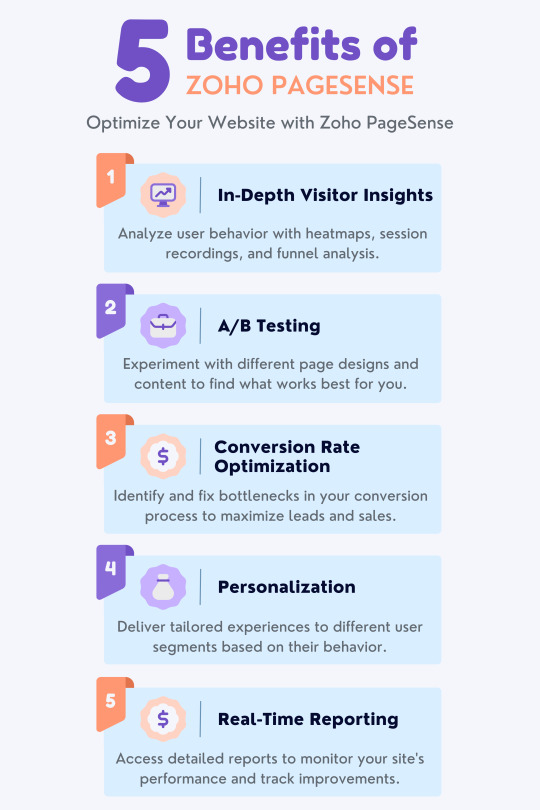
Unlock your website's full potential with Zoho PageSense! This powerful tool helps you understand visitor behavior, run A/B tests, and improve conversions. From heatmaps to funnel analysis, Zoho PageSense provides insights that allow you to make data-driven decisions to enhance your user experience and boost your site's performance. Take your website to the next level with Zoho PageSense!
#ZohoPageSense#WebsiteOptimization#ABTesting#ConversionOptimization#UserExperience#WebsiteAnalytics#DigitalMarketing#ZohoApps#BusinessGrowth#DataDrivenDecisions
0 notes
Text
We are going to review the power of website analytics and why they are indispensable for any business, big or small, aiming to thrive in our digital world where the competition is fierce. https://waterbearmarketing.com/unveiling-the-power-of-website-analytics-understanding-your-audience-for-optimal-growth/
0 notes
Text

Choose the platform that best suits your target audience 🎯 . . .
1 note
·
View note
Text
Discover the power of tracking website calls and email clicks seamlessly with Google Analytics 4 and Google Tag Manager. Our step-by-step guide will equip you with the knowledge to decipher user behavior, fine-tune marketing strategies, and elevate your conversion rates effortlessly. Dive in and unlock the potential of data-driven insights!
#UnlockInsights#GoogleAnalytics#GoogleTagManager#DataDriven#ConversionOptimization#UserBehavior#MarketingStrategy#DigitalMarketing#Analytics#DigitalInsights#MarketingTips#OnlineMarketing#WebTraffic#Optimization#ConversionRate#DigitalStrategy#WebsiteAnalytics#TagManagement
1 note
·
View note
Text
A Close-Up View Of The Impact of Dollar Exchange Rate Hike on African Immigrants
Uncover the intricate effects of the volatile dollar exchange rate hike on African immigrants. Gain a close-up perspective in this insightful blog post.
The impact of the dollar exchange rate hike on African immigrants is a critical subject that affects various segments of the population. From general audiences to travelers, students, business owners, and professionals, understanding the consequences of this economic shift is imperative as the implications of this exchange rate fluctuation are far-reaching and have a profound impact on the lives…

View On WordPress
#AfricanImmigrants#AfricanImmigrantsInsights#AudienceEngagement#ConversionRateOptimization#CurrencyFluctuations#DataDrivenDecisions#DollarExchangeRateAnalysis#EconomicAnalysis#FinancialImpacts#ForeignExchange#GlobalEconomy#ImmigrantExperience#KeywordOptimization#MigrationCosts#SEOforBloggers#Websiteanalytics
0 notes
Text
Marketers and business owners can make better decisions to grow their businesses by having a metric for measuring customer satisfaction. Companies use customer journey analytics for their ability to improve customer experience, increase customer retention and lifetime value, and grow revenue. With a clearer picture of the customer story backed by real-time data, organizations can see exactly how someone behaves on their website or any other platform. Consistent customer support throughout the customer journey is becoming increasingly important for business success.
#CustomerSatisfactionMetric#CustomerJourneyAnalytics#CustomerExperience#CustomerRetention#RealTimeData#CustomerBehavior#WebsiteAnalytics#PlatformAnalytics#BusinessSuccess
0 notes
Text

Checking on your website’s analytics after a recent update can give you vital information about if the update is helping your traffic and by how much.
Alternatively, it can show you if something is possibly going wrong and can save you from long-term negative effects.
#AGMSolutions#MarketingSolutions#MarketingAgency#WebsiteAnalytics#WebsiteUpdate#WebUpdate#WebWednesday
0 notes
Text







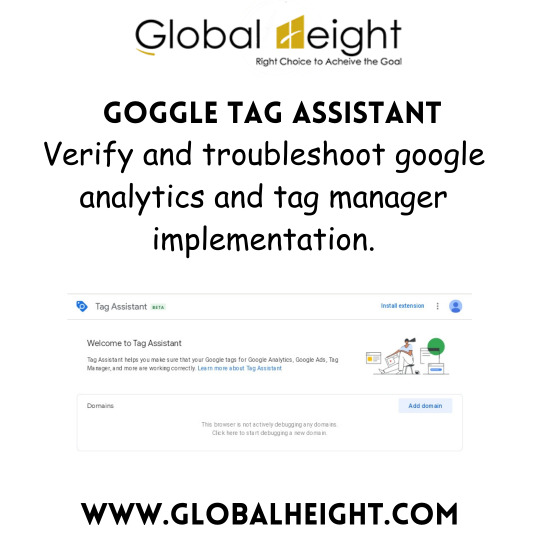
Best Extensions For Digital Marketing
⭐Buffer ⭐Grammarly ⭐Mozbar ⭐Buzzsumo ⭐Similar web ⭐Hunter ⭐Google tag assittant . . . Like❤ | Follow 👉 @global-height for more information ✔️
#DigitalMarketingTools#MarketingExtensions#DigitalMarketingSoftware#MarketingProductivity#BufferApp#GrammarlyExtension#MozBarTool#BuzzSumoAnalytics#SimilarWebInsights#HunterEmailFinder#TagAssistantGoogle#MarketingHacks#OnlineMarketingTools#SEOExtensions#ContentDiscovery#CompetitorAnalysis#WebsiteAnalytics#MarketingInsights
0 notes
Text
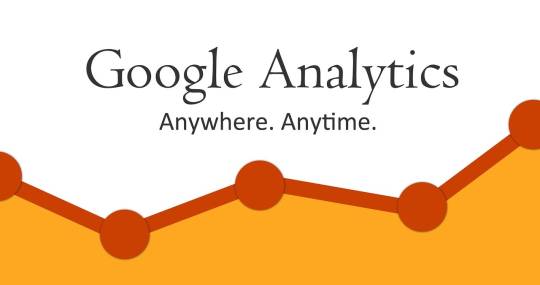
#GoogleAnalytics#WebsiteAnalytics#DataAnalysis#DigitalMarketing#OnlineMarketing#SEO#WebTraffic#ConversionTracking#DataInsights#MarketingStrategy#AnalyticsTools#WebsitePerformance#Metrics#UserBehavior#AudienceInsights#TrackingCode#TrafficSources#CampaignTracking#EcommerceAnalytics#GoalTracking#DataVisualization#BusinessIntelligence#DataDrivenDecisions#MeasurementPlan#AnalyticsReporting#PerformanceMetrics
0 notes
Text

Build your business website | Anantadrive Cloud
VISIT OUR WEBSITE
FB -https://www.facebook.com/photo/?fbid=150277194708559&set=a.102346186168327
FREE Domain Name for 1st Year
One year of domain registration is included with each new plan. After the initial year.
Free SSL Certificate
An SSL provides a secure connection to your website, allows for eCommerce.
30-Day Money-Back Guarantee
If you are unhappy for any reason within the first 30 days of service, you can cancel for a full refund.
Build your business website | Anantadrive Cloud
#anantadrivecloud#anantadrive#website#websiteinspiration#websiteinvitation#websiteislive#websiteecommerce#websiteexpert#websiteexclusive#websiteagency#websiteaudit#websiteanimation#websiteanalytics#websiteanalysis#websiteknowledge#websitehosting#websitehacking#websitehack#websitehelp#websitehacks#websitegame#websitegoals#websitegiveaway#websitegrowth#websitedesign#websitedevelopment#websitedesigner#websitemarketing#websitemaker#websitemanagement
0 notes
Text
From Data to Domination
Aniruddh Saha| Digital Marketing Intern
In this digital realm online presence is very much important. Online Presence facilitate businesses to get a wider reach and more sales. Every business owner has the desire to be at the top rank in Google’s SERP (Search Engine Results Page). Here comes the role of Google Analytics and Google Search Console. Google Analytics is free web analytics tool that help to get the data of website’s traffic. And Google Search Console is a powerful web master tool by Google that helps to understand the performance and health of SEO in one’s website.
Let me give one example for better understanding. Suppose a Digital Marketing Institute in India that provides a top-notch courses and training. Now this academy has the desire to be at the top of SERP to get more visibility and a greater number of students. Here Google Analytics plays a vital role. It shows the audience data like demographics, interest and behavior that helps to understand the visitor’s demographics, interest and behavior. Now this academy can create more engaging content that visitor wants, this will drive more traffic in their website. After posting a content, Google Search Console will show whether the page is indexed or not. If not then you can request indexing.
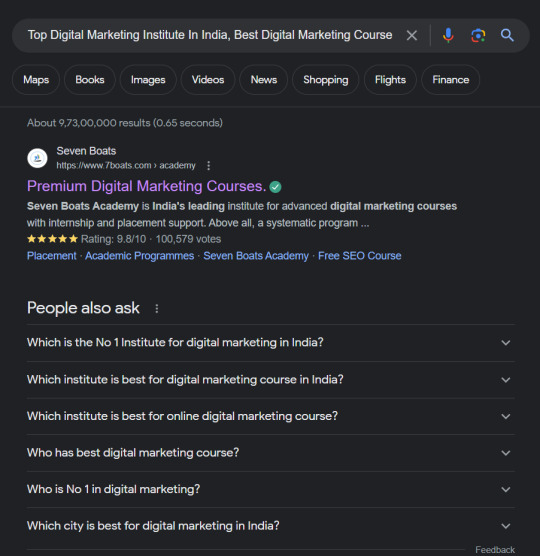
Understanding Google Analytics
Google Analytics is a web analytics service offered by Google that tracks and reports website traffic and also the mobile app traffic & events, currently as a platform inside the Google Marketing Platform brand. Google launched the service in November 2005 after acquiring Urchin.
Google Analytics can track the number of visitors to your website, where they are coming from, and what pages they are visiting. It can also track how users interact with your website, such as how long they spend on each page, what links they click on, and how they navigate through your site.
Google Analytics can be used to track the performance of your marketing campaigns, such as how many people click on your ads and how many of those people convert into customers. It can also be used to track the effectiveness of your website content, such as which pages are the most popular and which pages are driving the most conversions.
Google Analytics is a powerful tool that can help you track and analyse your website traffic. This data can be used to improve your website, your marketing campaigns, and your overall business performance.

Here are some of the benefits of using Google Analytics:
Track website traffic: Google Analytics can track the number of visitors to your website, where they are coming from, and what pages they are visiting. This information can be used to identify which marketing channels are most effective and to optimize your website for better user experience.
Analyses user behaviour: Google Analytics can track how users interact with your website, such as how long they spend on each page, what links they click on, and how they navigate through your site. This information can be used to improve the usability of your website and to create more engaging content.
Track conversions: Google Analytics can track conversions, which are actions that you want users to take on your website, such as making a purchase, signing up for a newsletter, or downloading a white paper. This information can be used to measure the success of your marketing campaigns and to identify areas where you can improve.
Benchmark your performance: Google Analytics can compare your website's traffic and conversion rates to other websites in your industry. This information can be used to benchmark your performance and to identify areas where you can improve.
Create reports: Google Analytics can create reports that summarize your website traffic and conversion data. These reports can be used to share your findings with your team, to track your progress over time, and to make informed decisions about your marketing campaigns.
If you are serious about improving your website and your marketing campaigns, then Google Analytics is a tool that you should definitely use. It is a powerful tool that can help you track and analyse your website traffic in a number of ways.

Leveraging Google Analytics for Online Presence Improvement
Google analytics helps to improve online presence of a business. Now we will see what are the KPI (Key Performance Indicator) metrics that should be consider in Google Analytics to take better decision in your business.
Sessions: This metric measures the number of times people visit your website. It is a good starting point for understanding how many people are interested in your website and what content they are interested in.
Unique Visitors: This metric measures the number of different people who visit your website. It is a good way to track how your website is growing over time and to see if you are reaching new people.
Bounce Rate: This metric measures the percentage of people who visit your website and then leave without viewing any other pages. A high bounce rate can indicate that your website is not engaging or that your content is not relevant to your target audience.
Average Session Duration: This metric measures the average amount of time people spend on your website. A long average session duration can indicate that people are engaged with your content and that they are finding what they are looking for.
Pages per Session: This metric measures the average number of pages people view during a single session. A high pages per session number can indicate that people are finding your content interesting and that they are clicking through to other pages on your website.
Conversion Rate: This metric measures the percentage of people who take a desired action on your website, such as making a purchase, signing up for a newsletter, or downloading a white paper. A high conversion rate can indicate that your website is effective at converting visitors into customers or leads.
These are just a few of the KPI metrics that can be used in Google Analytics to take better decisions in your business. The specific metrics that you track will depend on your business goals and objectives. However, by tracking these metrics, you can gain valuable insights into how your website is performing and how you can improve it.
Now let us see one example of how you can use these metrics to make better decisions in your business:
Let's say you own an online store and you want to increase sales. You can track the conversion rate for your website to see how many people are actually making purchases. If you see that the conversion rate is low, you can look for ways to improve your website's usability or your marketing campaigns.
Let's say you are a blog writer and you want to increase traffic to your blog. You can track the number of sessions and unique visitors to your blog to see how many people are visiting your blog. If you see that the number of sessions and unique visitors is low, you can look for ways to improve your blog's content or your promotion efforts.

By tracking these metrics, you can gain valuable insights into how your website is performing and how you can improve it. This information can help you make better decisions about your business and achieve your goals.
Introduction to Google Search Console
Google Search Console, formerly known as Google Webmaster Tools, is a free service offered by Google that helps website owners monitor and troubleshoot their website's presence in Google Search results.
Google Search Console offers a variety of tools and reports that can help you improve your website's visibility in Google Search. These tools include:
Index Coverage: This report shows you which pages of your website are indexed in Google Search.
Crawl Errors: This report shows you any errors that Googlebot encountered when crawling your website.
Manual Actions: This report shows you if Google has taken any manual actions against your website, such as deindexing it.
Search Appearance: This report shows you how your website appears in Google Search results, including your title tag, meta description, and keywords.
Performance: This report shows you how your website is performing in Google Search, such as the number of impressions, clicks, and average position.
Google Search Console is a valuable tool for any website owner who wants to improve their website's visibility in Google Search. By using the tools and reports offered by Google Search Console, you can identify and fix any issues that may be affecting your website's performance in Google Search.
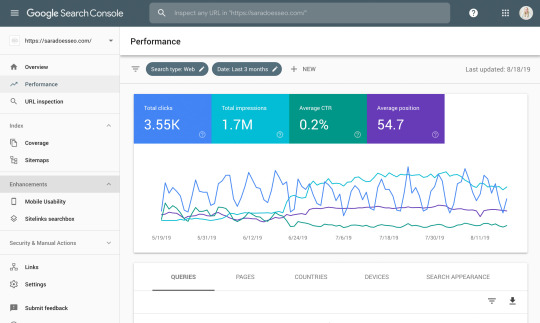
Here are some of the benefits of using Google Search Console:
Track your website's performance in Google Search: Google Search Console can track the number of impressions, clicks, and average position for your website in Google Search. This information can be used to see how your website is performing in Google Search and to identify areas where you can improve.
Identify and fix indexing errors: Google Search Console can identify any indexing errors that Googlebot encountered when crawling your website. These errors can prevent your website from being indexed in Google Search, so it is important to fix them as soon as possible.
Get notified of manual actions: Google Search Console can notify you if Google has taken any manual actions against your website, such as deindexing it. This information can help you understand why Google took these actions and how you can fix the problem.
Optimize your website for search: Google Search Console can help you optimize your website for search by providing information about how your website appears in Google Search results. This information can be used to improve your title tag, meta description, and keywords.
If you are serious about improving your website's visibility in Google Search, then Google Search Console is a tool that you should definitely use. It is a powerful tool that can help you track and troubleshoot your website's presence in Google Search results.
Enhancing Online Presence with Google Search Console
Performance: The Performance report in Google Search Console shows you how your website is performing in Google Search. This includes information such as the number of impressions, clicks, and average position for your website in Google Search. You can use this information to see how your website is performing in Google Search and to identify areas where you can improve. For example, if you see that your website is getting a lot of impressions but not many clicks, you may want to improve your title tag or meta description.
Coverage: The Coverage report in Google Search Console shows you which pages of your website are indexed in Google Search. This includes information such as the number of pages indexed, any errors that Googlebot encountered when crawling your website, and any pages that are blocked from being indexed. You can use this information to identify any issues that may be preventing your website from being indexed in Google Search. For example, if you see that a large number of pages on your website are not indexed, you may want to check your robots.txt file to make sure that Googlebot is allowed to crawl those pages.
Enhancement: The Enhancement report in Google Search Console provides information about how your website can be improved for search. This includes information such as your title tag, meta description, and keywords. You can use this information to optimize your website for search and to improve your chances of ranking higher in Google Search results. For example, if you see that your title tag is not very descriptive, you may want to improve it so that it better reflects the content of your page.
Security: The Security report in Google Search Console provides information about any security issues that may affect your website. This includes information such as malware, phishing, and spam. You can use this information to identify and fix any security issues on your website so that your website remains safe and secure. For example, if you see that your website has been infected with malware, you will need to take steps to remove the malware and secure your website.
Manual: The Manual Actions report in Google Search Console shows you if Google has taken any manual actions against your website. This includes actions such as deindexing your website or removing your website from Google's search results. If you see that Google has taken any manual actions against your website, you will need to take steps to fix the problem so that your website can be re-indexed in Google Search. For example, if your website has been deindexed for having thin content, you will need to add more content to your website so that it meets Google's quality guidelines.

By using the Performance, Coverage, Enhancement, Security, and Manual reports in Google Search Console, you can identify and fix any issues that may be affecting your website's performance in Google Search. This can help to enhance your online presence and improve your chances of ranking higher in Google Search results.
Conclusion
Now we have came to our conclusion. Here are some key take ways that you can consider and implement in your business:
Google Analytics and Google Search Console are two powerful tools that can help you improve your online presence.
Google Analytics can track your website traffic, analyze user behavior, track conversions, and create reports.
Google Search Console can track your website's performance in Google Search, identify and fix indexing errors, get notified of manual actions, and optimize your website for search.
By using these tools, you can identify and fix any issues that may be affecting your website's performance in Google Search.
This can help to enhance your online presence and improve your chances of ranking higher in Google Search results.
I encourage you to take action and start utilizing these powerful tools for your website. They are a great way to track your website's performance and to improve your online presence.
Here are some additional tips for using Google Analytics and Google Search Console:
Set up goals and objectives: Before you start using Google Analytics, it is important to set up goals and objectives for your website. This will help you track your progress and to see how your website is performing against your goals.
Track the right metrics: There are many different metrics that you can track in Google Analytics. It is important to track the metrics that are most important to you and to your business goals.
Use the reports: Google Analytics offers a variety of reports that can help you understand your website traffic and user behavior. Use these reports to identify areas where you can improve your website.
Stay up-to-date: Google Analytics and Google Search Console are constantly being updated with new features and functionality. It is important to stay up-to-date with these changes so that you can get the most out of these tools.
I hope this blog has been helpful. If you have any questions, please feel free to ask me in comments.
#GoogleAnalytics#GoogleSearchConsole#OnlinePresence#DigitalMarketing#DataAnalysis#WebsiteAnalytics#SearchEngineOptimization#OnlineMetrics#WebsiteInsights#PerformanceTracking
0 notes